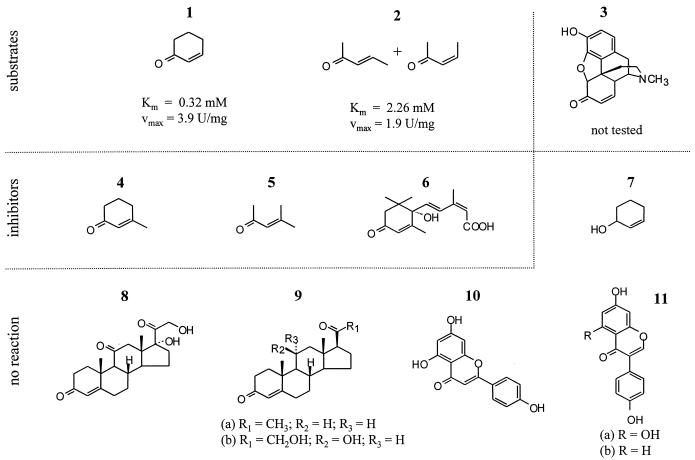FIG. 6.
Structures of the following chemical compounds tested as potential substrates or inhibitors of Ncr activity: 1, 2-cyclohexen-1-one; 2, 3-penten-2-one; 3, morphinone; 4, 3-methyl-2-cyclohexen-1-one; 5, 4-methyl-3-penten-2-one; 6, (+/−)-2-cis-4-trans-abscisic acid; 7, 2-cyclohexen-1-ol; 8, cortisone-21-acetate; 9a, progesterone; 9b, corticosterone; 10, apigenin; 11a, genistein; and 11b, daidzein. Compounds 1 and 2 functioned as Ncr substrates, with Km and Vmax values given below the diagrams of the structures. Presence of compounds 4 to 6 inhibited Ncr activity, whereas compounds 7 to 11b neither functioned as substrates nor inhibited Ncr activity.

